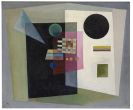
Jacob Jacobsen
1901 Oslo
The Norwegian engineer Jacob Jacobsen started out working in the textile industry but in the 1930s he met the English motor vehicle engineer George Carwardine. Carwardine had developed a work lamp, with an innovative principle for the flexible adjustment of the lampshade, which he had patented in 1934. The lampshade of the Carwardine "Anglepoise" lamp is attached to a long arm with two joints. The equilibrium of the arm is maintained in any position by springs fastened to each side of it, which operate on the force and countervailing force principle of human arm muscles. The lamp can thus be positioned to allow the source of light to be manipulated as desired. Jacob Jacobsen was so enthusiastic about the "Anglepoise" lamp that he acquired the production rights for Scandinavia in 1937. That same year, 1937, Jacob Jacobsen designed a variant of the "Anglepoise". The Jacob Jacobsen worktable lamp "Luxo L-1" retained the principle of maintaining equilibrium through the continual tension of springs on the lamp arm and Jacob Jacobsen refined the form and upgraded the material used to make his version of the lamp. Later there was another model, the "Panoramic", which featured a larger shade. Jacob Jacobsen was enormously successful at marketing his Luxo lamps. In the 1940s Jacob Jacobsen managed to have a virtual monopoly on sales of workplace lighting in Europe and the United States. The basic conception has never been improved on even though the lamp constructed on this principle has been much copied and varied over the years.

Would you like to sell a work by Jacob Jacobsen?
Infos for seller






